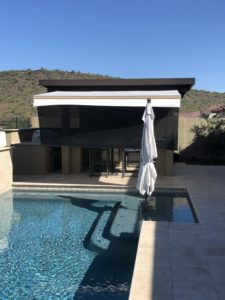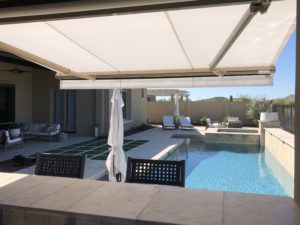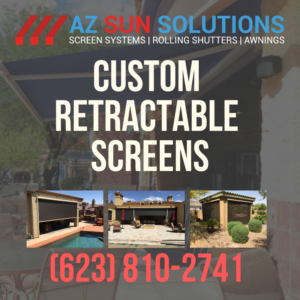 Understanding How Retractable Awnings & Other Key Considerations For Potential Buyers
Understanding How Retractable Awnings & Other Key Considerations For Potential Buyers
Though they are among the most convenient options for residential and commercial patio shade solutions, few sources provide potential buyers with relevant insights about how retractable awnings work in different conditions and configurations. This lack of information on awnings and, specifically, how retractable awnings work in real-life installations, has fostered the growth of several significant myths about how retractable awnings work in specific settings and weather conditions. Consequently, despite their many advantages over other shade solutions, the use of retractable awnings is pervasively misunderstood. This leads many homeowners and business owners to overlook how retractable awnings work even better than some other shade solutions for homes and businesses just like theirs.
The Mechanics Behind Retractable Awnings
Retractable awnings are shade structures that are affixed to the side of a building and can retract against the side of the building at the owner’s discretion. When constructed of high-quality materials and installed by experienced professionals, retractable awnings work guarantees to maximize the potential uses of any outdoor space. This is because retractable awnings empower home and business owners to block the sun and rain as needed while also having the freedom to retract the awning to let natural light through adjacent windows. This solves one of the chief complaints of patio and shade structure installation: though they enable better use of outdoor spaces, they can make adjacent indoor spaces dark and ruin the view.
The specific mechanics behind how retractable awnings work varies slightly depending on the mode of power used for opening and closing the awning. This is because retractable awnings are available for purchase in both manual and automatic configurations. Retractable awnings work when manually powered depends on the user’s ability to turn a hand-crank, while automatic versions come equipped with a motor that powers awning retraction and extension. This design may seem simple enough, yet many potential buyers have lingering questions about how retractable awnings work in specific spaces and under specific conditions.
 Retractable Awnings Work In Real-Life Installations
Retractable Awnings Work In Real-Life Installations
The truth is, retractable awnings work for different buyers depends mainly on the quality and configuration of the awning, as well as the unique characteristics of the installation location.
For example, retractable awnings when exposed to different weather conditions depends on the quality of the construction, the competency of the installation service, and the different included optional features. The best-quality retractable awning construction uses extruded steel rather than lightweight aluminum, which will withstand more severe weather conditions than other materials. Moreover, for the highest-quality models, retractable awnings work depends on their use of weather and light sensors to automatically retract when unneeded or if weather conditions become too to remain extended. Consequently, retractable awnings work for any specific home or business depends on buyers’ unique choices for configuring them.
 That said, there are some universal truths about retractable awnings in any configuration and condition. For starters, retractable awnings work during power outages is the same: all automatic models come with a hand-crank for back-up use when the motor is unable to power retraction. Additionally, awnings work remains the same regardless of the size of the awning; all awnings need at least six inches of (vertical) space for installation and must be installed with a downward slant away from the building; many awnings can be installed without the input of a contractor or homeowner’s association; and no awning needs additional support poles. Additionally, well-constructed retractable awnings should require little-to-no ongoing maintenance, as all the parts — including the frame, shade materials, fixtures, and mechanics — are made to withstand exposure to the elements as well as the long-term abuses of protecting outdoor spaces from heat, rain, and cold. That said, potential buyers should understand that how retractable awnings work is as always as a temporary shade structure during mild-to-moderate inclement/inconvenient weather, not as a permanent shade or carport structure.
That said, there are some universal truths about retractable awnings in any configuration and condition. For starters, retractable awnings work during power outages is the same: all automatic models come with a hand-crank for back-up use when the motor is unable to power retraction. Additionally, awnings work remains the same regardless of the size of the awning; all awnings need at least six inches of (vertical) space for installation and must be installed with a downward slant away from the building; many awnings can be installed without the input of a contractor or homeowner’s association; and no awning needs additional support poles. Additionally, well-constructed retractable awnings should require little-to-no ongoing maintenance, as all the parts — including the frame, shade materials, fixtures, and mechanics — are made to withstand exposure to the elements as well as the long-term abuses of protecting outdoor spaces from heat, rain, and cold. That said, potential buyers should understand that how retractable awnings work is as always as a temporary shade structure during mild-to-moderate inclement/inconvenient weather, not as a permanent shade or carport structure.




